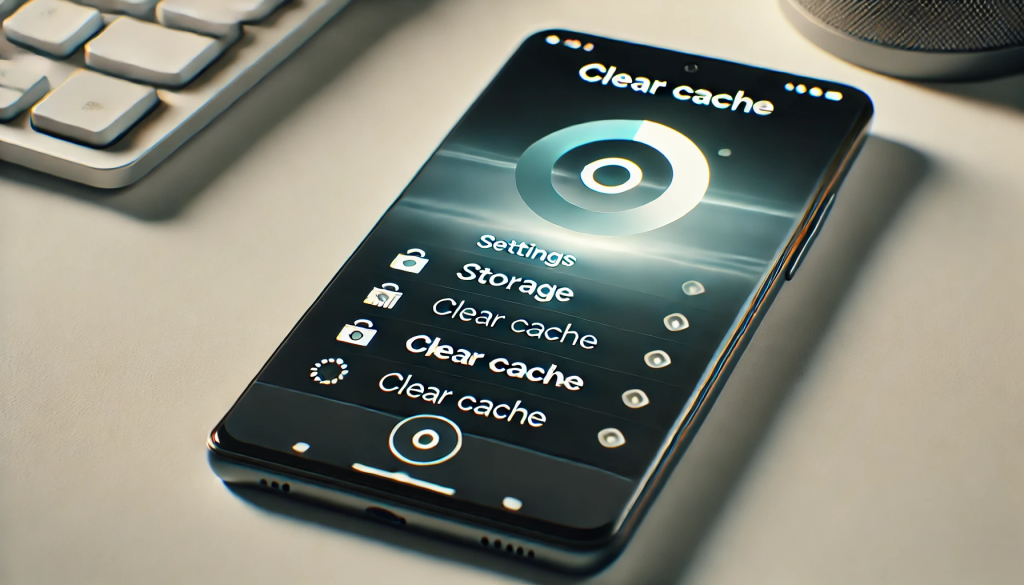Is your Android device feeling sluggish, freezing, or taking longer than usual to open apps? These are common signs that accumulated cached data might affect your phone’s performance. While cached data is designed to speed up app loading times by storing temporary files, it can also become a burden over time. As more apps continue to generate cache files, your device’s storage fills up, potentially leading to slow response times, lagging applications, or even system crashes.
Clearing the cache can quickly and effectively free up space and restore your device’s speed without deleting critical files or app settings. Removing unnecessary temporary files can ensure smoother app performance, better storage management, and even improve battery efficiency.
In this comprehensive guide, we’ll walk you through a step-by-step process for clearing the cache on Android. Whether you want to clear the cache for a single app, multiple apps, or even the entire system, we’ve got you covered with simple instructions to help you optimize your device’s performance effortlessly.

What is Cached Data?
Cached data is a form of temporary storage that apps and the Android system use to store frequently accessed information, such as images, scripts, or other elements, to reduce loading times and improve performance. For example, when you open a website in your browser, it saves some aspects like images and layout structures so that the next time you visit, the page loads faster instead of downloading everything again. Similarly, apps like Instagram, Facebook, or YouTube store images, video thumbnails, and other assets locally to ensure a smoother user experience.
While caching enhances performance by minimizing data retrieval times and reducing network usage, it can become problematic if left unchecked. Over time, cached data accumulates, taking up valuable storage space and potentially slowing down your device. In some cases, outdated or corrupted cache files can cause apps to behave unpredictably—resulting in lag, crashes, or incorrect data being displayed. If an app frequently crashes or fails to update content properly, clearing the cache can often resolve these issues.
Moreover, certain apps may cache excessive amounts of data, consuming gigabytes of storage unnecessarily. This is especially noticeable in apps that handle media files, such as social media platforms, streaming services, and web browsers. Regularly clearing the cache can help maintain optimal performance and free up storage without affecting personal data or app settings.
Why Should You Clear Cache?
- Free up storage space – Over time, cached files can occupy much space.
- Improve device performance – Removing unnecessary cache files can make your phone smoother.
- Fix app issues – If an app is lagging, freezing, or behaving strangely, clearing its cache can resolve it.
- Enhance privacy – Some cached files may store personal data you don’t want lingering on your device.
How to Clear Cache on Android
1. Clear App Cache (For Individual Apps)
If a specific app is misbehaving or taking up too much space, clearing its cache can help.
Steps to Clear App Cache:
- Open Settings on your Android device.
- Tap on Apps or Apps & notifications (varies by device).
- Select the app for which you want to clear the cache.
- Tap on Storage & cache.
- Tap Clear Cache.
🔹 Note: This will only remove temporary data and won’t delete personal settings or login details.
2. Clear Cache for All Apps at Once (Android 11 and Below)
Some older Android versions allow you to clear cache for all apps simultaneously.
Steps:
- Open Settings.
- Tap Storage or Device Care (varies by device).
- Tap Cached data.
- Confirm by selecting OK to clear all cached files.
📌 Note: Newer Android versions (Android 12 and later) don’t have this option, so you must manually clear cache for each app.
3. Clear Cache from Chrome and Other Browsers
If your internet browsing experience is slow, clearing browser cache can help.
Steps for Chrome:
- Open Google Chrome.
- Tap the three-dot menu in the top-right corner.
- Select Settings > Privacy and security.
- Tap Clear browsing data.
- Select Cached images and files and choose Clear Data.
✔️ Tip: You can also clear cookies and history if needed.
4. Clear System Cache via Recovery Mode (Advanced Users)
If your phone is slow or experiencing software glitches, clearing the system cache might help.
Steps to Clear System Cache:
- Turn off your Android device.
- Press and hold Power + Volume Up (or Power + Volume Down, depending on the model).
- When the recovery mode screen appears, use the Volume buttons to navigate.
- Select Wipe cache partition and confirm using the Power button.
- Once completed, select Reboot system now.
⚠️ Caution: Be careful when using Recovery Mode, as selecting the wrong option may erase all your data.
When Should You Clear Cache?
- When your phone runs slower than usual.
- When an app crashes frequently or acts unresponsive.
- When your storage is almost complete.
- After a major system update to clear outdated cache files.
FAQs
Q1: Does clearing cache delete app data?
Clearing the cache removes temporary files but keeps personal data, settings, and logins intact.
Q2: Will clearing cache improve battery life?
It can help indirectly by reducing background processes that drain battery life.
Q3: How often should I clear cache?
It depends on your usage, but it is recommended once a few weeks or when you notice performance issues.
Q4: Is there an automatic way to clear cache regularly?
Some Android devices have built-in Device Care or Storage Manager features that periodically clear cache. You can also use third-party apps like CCleaner.
Conclusion
Clearing cache on Android is a simple yet effective way to free up storage and boost performance. Whether you clear cache for specific apps, browsers, or even system cache, following these steps can help keep your phone running smoothly. Try it today and enjoy a faster Android experience!
📢 Was this guide helpful? Please share it with others who might need a quick performance boost for their Android devices! 🚀


